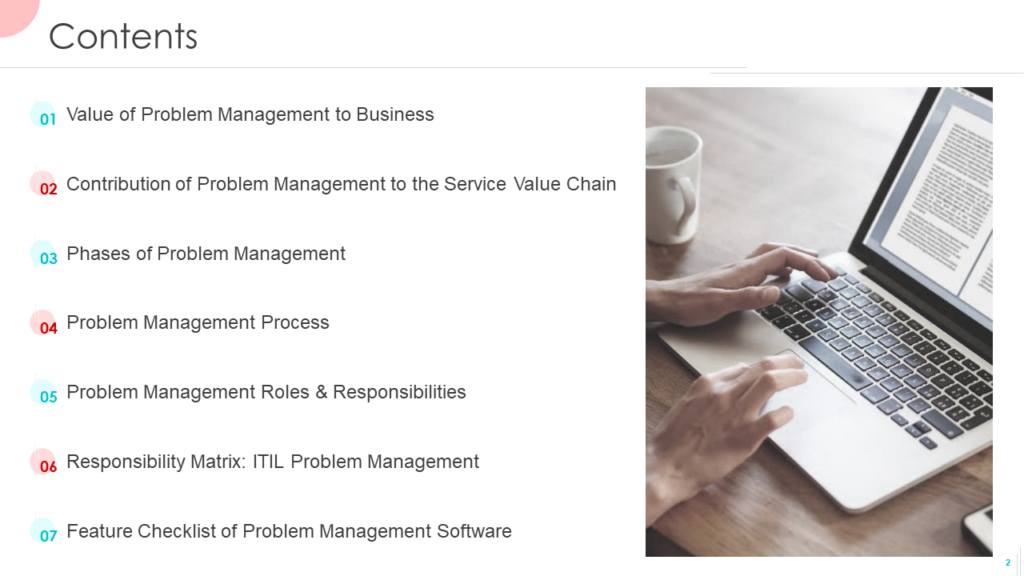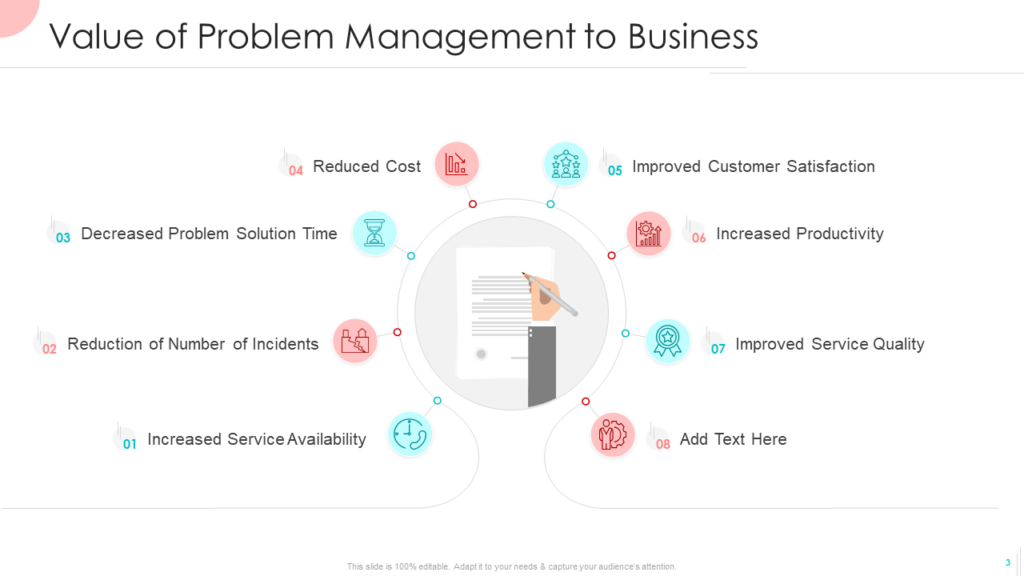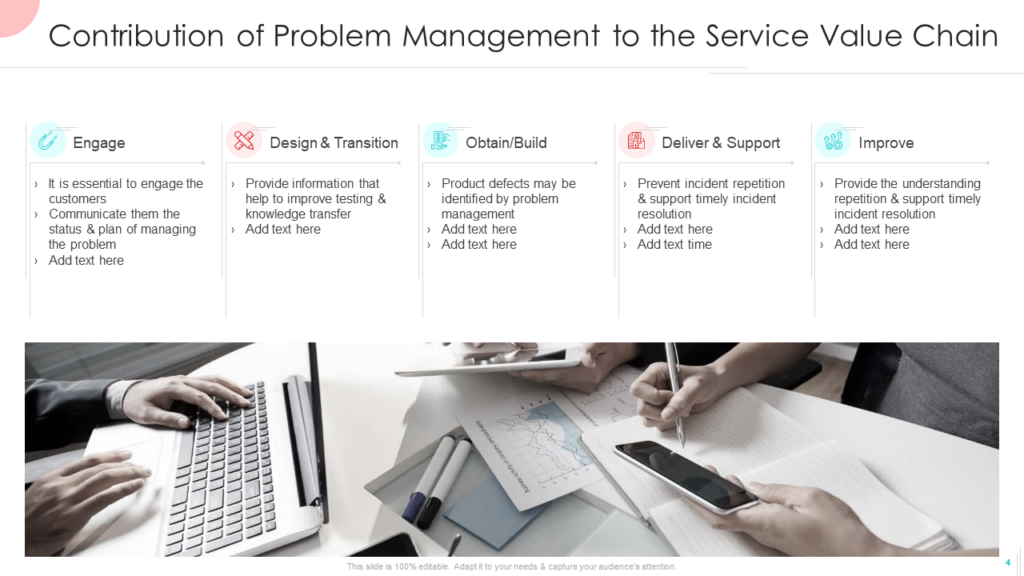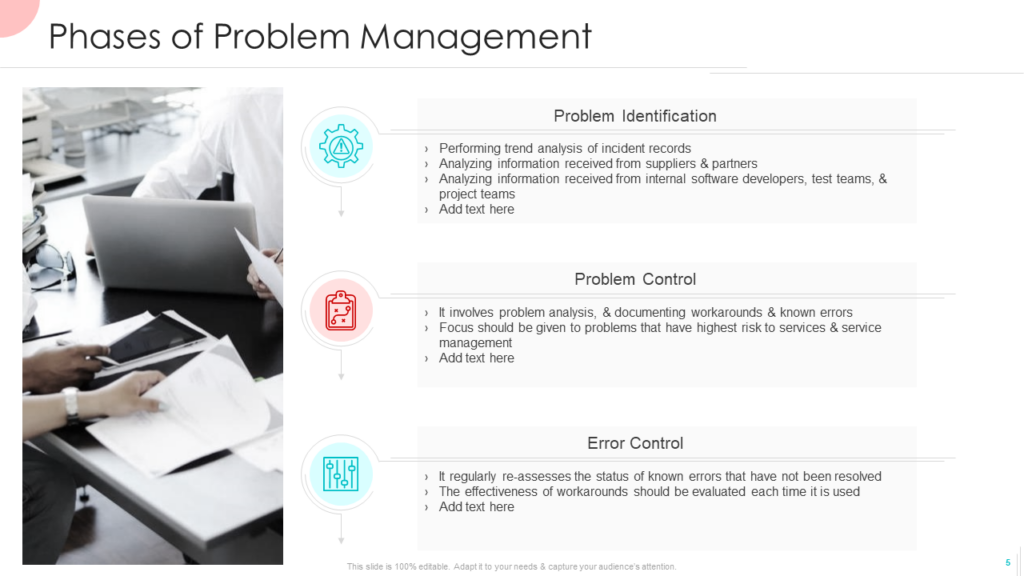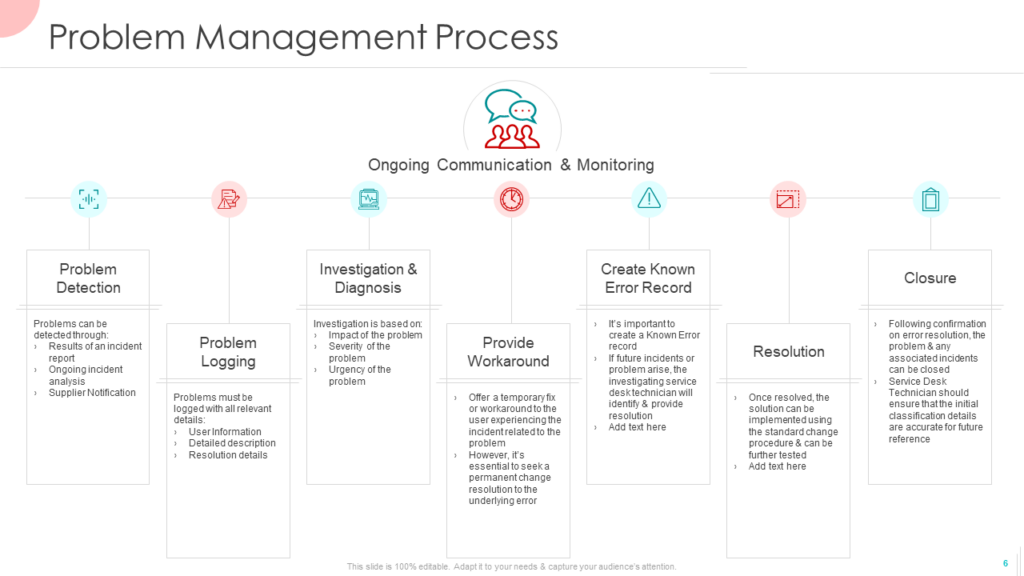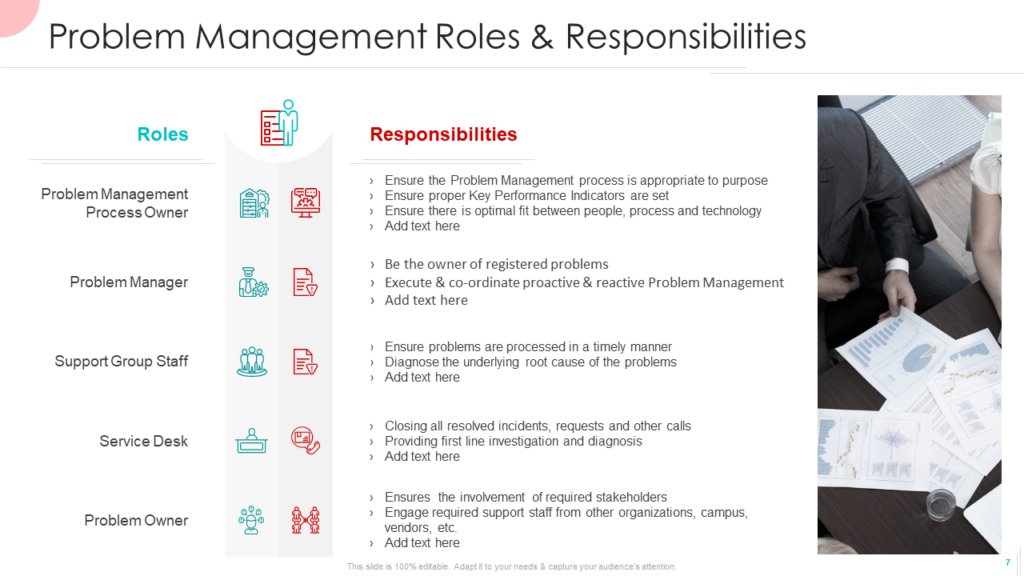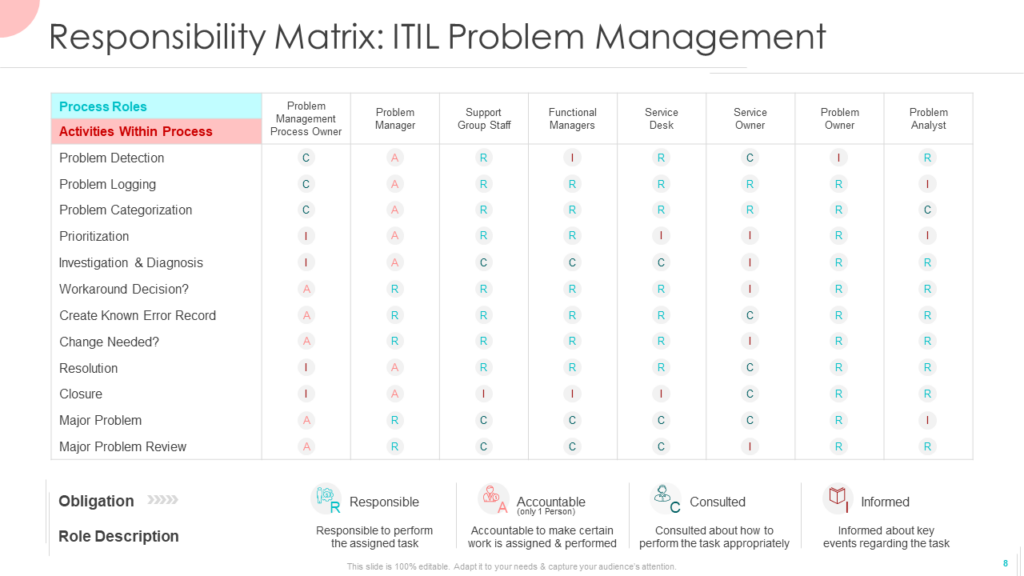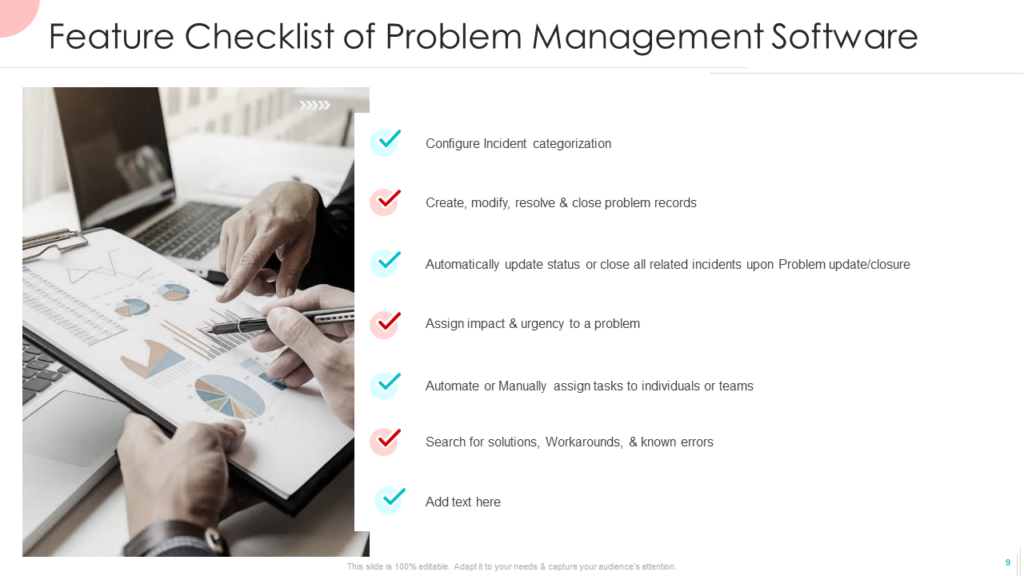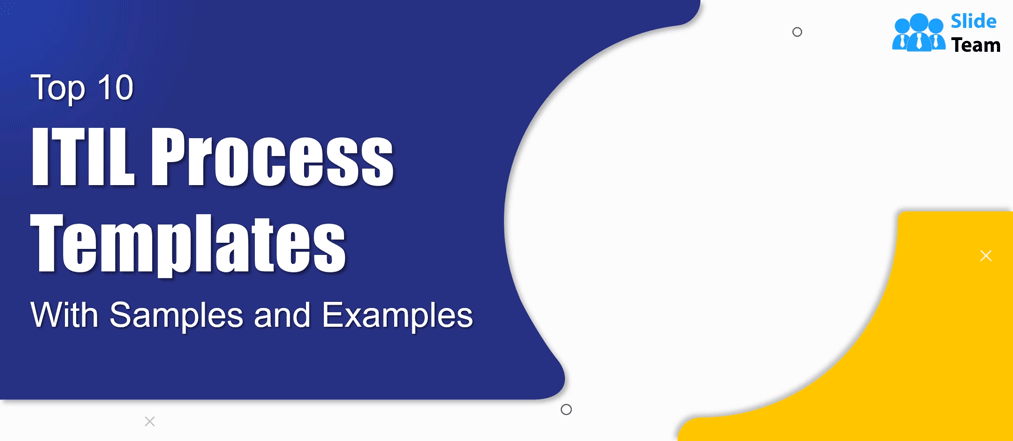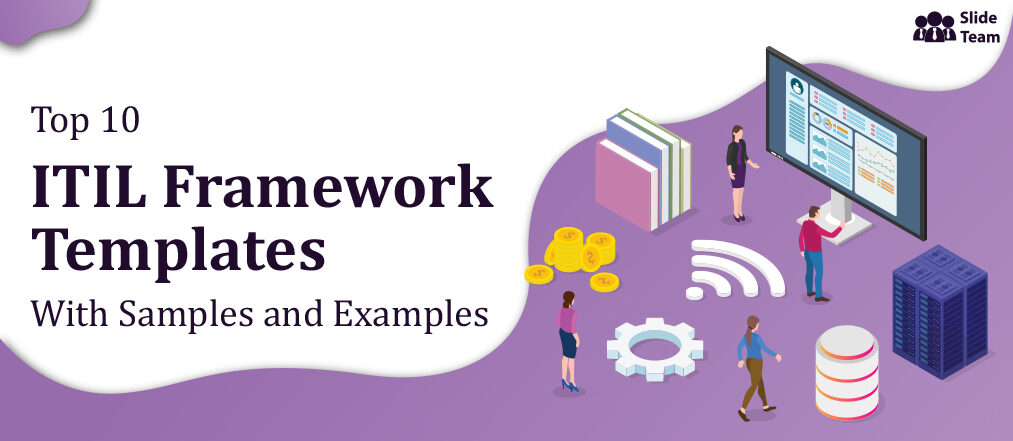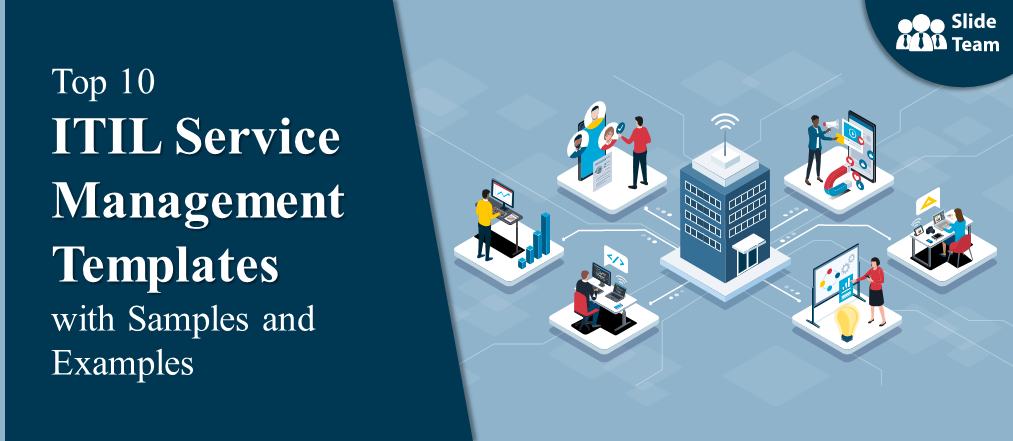In the fast-paced workplaces of today, things move at the speed of light, with businesses relying on Information Technology (IT) to serve consumers. The pulsating environment does, however, cause strains and stresses on the IT infrastructure that powers such rapid/fruitful interactions and transactions.
These reflect in issues like a server going down, an employee’s access to data getting locked, or a piece of software deciding to corrupt itself. All such circumstances require you to raise tickets for IT support.
At this stage, it is important to strike a balance between quick fixes (band-aid style of IT functioning) that help work to continue and long-term solutions that allow snag-free functioning.
There is no doubt about which approach is best. Going long-term is what matters, but, to understand the root of an IT problem, it’s critical to find reasons why the IT issue occurred in the first place. After this, businesses can find answers to what will prevent an IT problem from recurring. This is where ITIL Problem Management makes its grand entry. It provides a reliable and valid method to ensure that IT operations can carry on without incident or disruption.
In my previous four blogs in this series of original articles on the Information Technology Infrastructure Library (ITIL), we have already gone through its framework, processes, service management, and change management.
This blog is a look into the ITIL Problem Management process and helps you delve deeper into incidents to find the root causes. This ensures that your business has the capability to suggest and implement long-term solutions.
These practices are invaluable as you ensure that the frequency of disruptions that hit business productivity is kept to the minimum.
ITIL Problem Management Template
While ITIL Problem Management has a logical and easy description, implementing it within your organization is challenging. More often than not, mere problem management doesn’t give the expected result upon implementation. To prevent that, we recommend SlideTeaming your work with logical templates on ITIL Problem Management.
Yes, you got us right! SlideTeaming.
SlideTeam has a comprehensive resource for you in the form of a complete PowerPoint Presentation, which you can incorporate to guide your workforce. This template will educate your team on the objectives, process, roles and responsibilities, metrics, and other crucial information on ITIL Problem Management. This PPT Deck is easy to download, save, and you can customize it to your business needs.
Let’s start the treasure hunt!
Template 1: ITIL Problem Management Template
In this ever-changing digital world, having a solid understanding of ITIL Problem Management is more important than ever. This PowerPoint Presentation is the perfect way to learn about this crucial topic. It covers the basics, key terms, and definitions of theories and even offers some best practices. With this template, you’ll have everything you need to hit the ground running with your ITIL skills. Download it now to kick-start your ITIL journey!
Template 2: ITIL Problem Management Table of Contents PPT Slide
This slide provides a clear and concise overview of topics you need to cover. You can be confident that a download will put you across as an authority on resolving ITIL problems. Problem management, objectives, benefits, roles & responsibilities, processes, etc, are all covered. Include this page in your guide to prepare your team for the concept beforehand.
Template 3: Value of Problem Management to Business
For businesses, implementing ITIL Problem Management practices is a tool for greater efficiency. This informative slide provides unique and valuable insights and highlights eight critical benefits in an easy-to-understand circular diagram with relevant icons. This is an effective way to educate your team members about the value of problem management and how it can help improve operations. Grab it today and get one step closer to your business goals.
Template 4: Contribution of Problem Management to Service Value Chain
Do you want to ensure that your IT services are free of problems? Then your employees must first see problem management as a contribution to the service value chain. This slide highlights the five primary strategic functions that ITIL contributes to and enhances the services. With this information, guide your team on how it can identify and resolve problems in IT Services. Download it and get started on ensuring problem-free IT services!
Template 5: Phases of Problem Management
This PowerPoint presentation is ideal if you’re looking for a foolproof method to explain phases in problem management. It covers all three parts of ITIL’s problem management process: Problem identification, control, and error prevention. This slide lists the activities and tasks your staff must complete ensuring productivity. Download it to have a full reference guide on ITIL.
Template 6: Problem Management Process
This PPT Template entails a seven-step process of ITIL Problem Management. These are problem detection, problem logging; investigation diagnosis, providing a workaround, creating known error records, resolution, and closure. It also includes relevant icons for each step for easy recall. With this layout, you can present your problem management workflow in an easy-to-understand manner and prepare a team that will be well aware of the process.
Template 7: Problem Management Roles & Responsibilities
Use this PPT Slide to give your staff a clear view of problem management roles and responsibilities. Assign roles and describe the responsibilities of each member or team with this well-structured format. This template provides a transparent picture of who is responsible for what function. Download it today!
Template 8: Problem Management Responsibility Matrix
If you’re looking for a way to communicate the roles and responsibilities of people in your ITIL implementation, this PPT Slide is a great option. It includes a Responsibility Matrix that clearly illustrates who is responsible for what part of the process. This information ensures that everyone is on the same page and knows exactly what needs to be done. Grab this matrix now and get your ITIL implementation off to a great start!
Template 9: Problem Management Software Checklist
Every project requires a checklist for follow-up and tracking. We present this powerful document to help you with a general IT problem management implementation checklist. This checklist can help define and track activities, check their status, and help everyone be on the same page. Download to streamline your problem management process!
Template 10: Additional Slides
You will be happy to know that this deck contains a free bundle of extra slides on terms and conditions, our team, contact us, and testimonials. It also contains charts, roadmaps, and graphs to help you present your information in an easy-to-understand manner. This is the ideal tool whether you’re just starting with the ITIL or dealing with a problem. Download this presentation on ITIL Problem Management right away. Don’t delay!
FREE FLOW OF INFORMATION KEY
As an ITIL thumb-rule, problem management is most effective when combined with other ITIL practices in the service value chain. Information is exchanged between ITIL practices: incident management, change management, IT asset management, knowledge management, and continual service improvement.
When freely shared across the ITIL use case and practice, this set of information gains enormous value. The result is building an optimized IT service management process.
Now that you have the latest resource available to you, why not get started right away with a download? This PowerPoint Template will help you integrate with other ITIL practices to build one of the most powerful service delivery processes that modern businesses can aim at.
P.S. If you are looking for an ITIL Change Management presentation to help your team with an easy transition, here’s a handy guide with the best templates.
FAQs on ITIL Problem Management
What is the difference between problem management and incident management?
Problems and incidents are inextricably linked. One produces the other; teams must pay attention to both. The difference between the two, however, is described in terms of scope and strategy. An incident is one occurrence, but a problem is the underlying cause of many similar or dissimilar incidents.
Problem management focuses on reducing the chances of an incident occurring, while incident management is concerned with handling incidents as they happen. By following the ITIL approach, businesses get the capability to ensure that both problem and incident-management efforts align with their core goals.
What are the two types of Problem Management?
The two major types of Problem Management are Reactive and Proactive.
Reactive Problem Management is used only when an incident occurs. Many organizations hold post-incident reviews to discuss what could have caused the major incident. If there’s a probability of a recurrence, reactive problem management steps are put into place.
Proactive problem management searches for potential problem instances based on current and historical data. This might range from formal Continuous Service Improvement to moderate data analysis (trending) or good old instinct.
What is the ITIL Problem Management process?
The ideal ITIL Problem Management process needs you to perform the following actions:
- Identify a potential problem
- Raise a problem management case
- Log-in the problem in your system
- Categorize and prioritize
- Conduct systematic investigation (Root Cause Analysis)
- Identify changes needed to resolve and work through Change Management
- Verify if the problem has been resolved
- Closeout the case in the system
What are the three phases of Problem Management?
Problem management involves three distinct phases:
Problem Identification
Problem identification activities identify and log-in problems by performing trend analysis of incident records, detecting duplicate and recurring issues, and analyzing information received from suppliers and partners. Analyzing information received from internal software developers, test teams, and project teams is also an important part.
Problem Control
Problem control activities include pinpointing issue areas and documenting duct-tape fixes and known errors. Problems are prioritized according to how much of a risk they pose in terms of probability and impact on services.
Error Control
Error control activities manage known errors and enable us to identify possible permanent solutions. If a permanent solution requires change control, we need to analyze it from the perspective of cost, risk, and benefits.


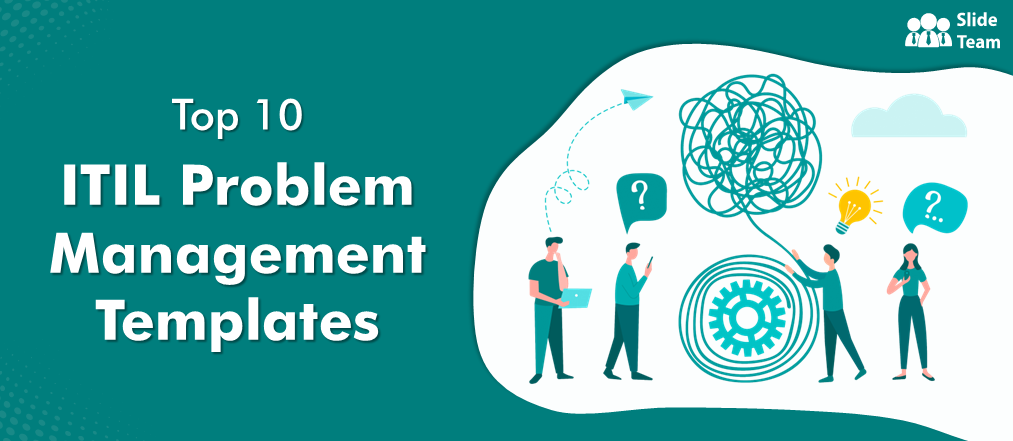


 Customer Reviews
Customer Reviews


